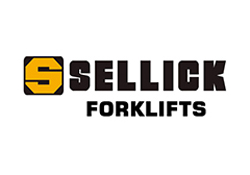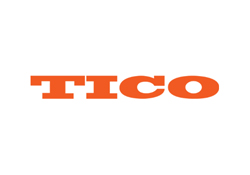
Modern warehouses are facing a growing problem — an increasing demand alongside a gap in worker supply. As production needs continue to rise, warehouse operators are looking for solutions to increase lift truck efficiency and equip their teams for success.
In addition to improving productivity, warehouse operators must continue to invest in workplace safety. Increasing speed and efficiency while enhancing safety is a challenge. However, technology that offers hazard alerts and automated safety features can play a big role in warehouse safety and performance. Learn more about the pros and cons of operator assistance technology (OAT), how it works and how it can benefit your teams.
What Is Operator Assistance Technology?
Operator assistance technologies are systems designed to support warehouse operators so their jobs are safer and more productive. These technologies integrate with existing equipment and warehouse software to simplify material handling tasks like picking, packing and replenishment.
When employees operate machinery inside a warehouse, they focus on many different tasks at once. They must move quickly to complete tasks while also safely using all machinery. By investing in operator assistance technologies, you can increase productivity while still prioritizing employee safety.
What operator assistance technologies don’t do is take over an operator’s job. Operators must still pay close attention to where they’re going, observe threats and operate machinery safely. Assistance technologies work together with operators to make warehouse operations safer and more efficient.
How Operator Assistance Technology Works
Several different kinds of operator assistance technology are available to improve your warehouse workflow. Here’s an example of how specific assistance technology could benefit your warehouse.
Lift Truck Solutions
Moving lift trucks around a warehouse requires lifting heavy loads, ensuring machinery stays balanced and making sure your equipment avoids collisions. When you combine these factors with the need for speed, lift accidents might seem easy to come by.
Even the most seasoned operator can become distracted, have an off day or miss something unusual. However, forklift operator assistance technology provides an extra layer of security for operators, equipping them to complete work with confidence. OAT supports operator awareness while optimizing performance with an array of tools. For instance, Yale Reliant uses real-time data and site-specific rules to match the lift’s behavior to the environment and operator.
Here are just a few ways lift truck technology can automate safety and assist operators:
- Warnings or lockouts when a load is too heavy
- Following distances to prevent tailgating
- Reduced speed near crossroads
- Improved balance when rounding corners
- Alerts for people and other machinery
Forklift operator assistance technologies can help prevent warehouse accidents through automated alerts and equipment responses. When you invest in this kind of technology, your operators, business and customers can all benefit.
Additional types of operator assistance technology include virtual reality training, voice-directed systems and pick-to-light systems that direct workers to locations. These technologies can all be used with existing equipment, helping your warehouse function more efficiently and increasing profits while keeping workers safe.
The Pros of Operator Assistance Technologies
For many warehouses, the cost of worker accidents easily outpaces the cost of OATs. From both a business and employee perspective, operator assistance technologies are a good investment and pay off in several ways.
Here are just a few of the benefits that come from using operator assistance technology:
OSHA Compliance
The Occupational Safety and Health Administration (OSHA) regulates many aspects of warehouse safety, and its interest in reducing hazards is only increasing. Part of OSHA compliance includes training employees to follow safety procedures and teaching them how to react in dangerous situations.
Operator assistance technologies like lift truck solutions are designed to be OSHA-compliant, reinforcing employee training so that it’s easier than ever to work safely at a warehouse. When you invest in operator assistance technology, you invest in employee safety and your warehouse’s regulatory compliance.
Increased Productivity
Another benefit of this technology is its positive impact on productivity. Tools like pick-to-light and voice-directed systems can streamline the workflow in your warehouse, helping workers speed up their process without sacrificing safety.
Improving warehouse efficiency often comes down to small changes that add up over time. When you integrate operator assistance technology, you equip workers to function at their best and complete each task with more confidence and focus.
Employee Retention
Warehouses often see high turnover rates, which can negatively impact productivity for your facility. If you must constantly train new employees, you miss out on the benefits of an experienced employee workforce.
Training takes time and resources you may not be able to afford. However, using operator assistance technology can be part of your plan to improve employee retention. This equipment can enhance employee experiences, protect them from injury and equip them to perform at a higher level.
The Cons of Operator Assistance Technology
Operator assistance technology comes with many benefits, but it also has several cons. Some cons to using operator assistance technology include:
- The additional costs of new tech.
- Workflow changes.
- Operator training requirements.
- Possible challenges integrating automation.
FAQs About Operator Assistance Technology
Still have questions? Here are some commonly asked questions and concerns about operator assistance technology. If you’re still on the fence about how this technology could impact your warehouse, these FAQs may help.
Will Operator Assistance Technology Take Over Jobs?
Most warehouses in the U.S. are seeing a shortage of workers, with a stark difference between supply and demand. Operator assistance technology may change job descriptions, especially as the technology develops. However, this tech is designed to support real people working in warehouses. You can’t use it without employees, but it can help you operate a warehouse with reduced staff by improving worker productivity.
Is Operator Assistance Technology Expensive?
Another excellent question is whether you can afford operator assistance technology. Depending on the type of technology you choose and the amount of equipment you want to upgrade, costs will vary. It’s best to talk to a representative for more exact numbers.
However, the cost of workplace accidents is a key consideration for purchasing this type of technology. When you factor in both employer costs and loss in wages, workplace accidents cost the U.S. $167.0 billion in 2021. Investing in operator assistance technology can save you money in the long run through improved safety.
Choose Gregory Poole Lift Systems
At Gregory Poole, we’ve partnered with Yale Robotics to bring you the best in operator assistance technology. Yale Reliant technology can be coupled with your existing equipment, making lift trucks safer and supporting operators during their daily tasks.
This technology helps your facility meet OSHA compliance and will improve workplace conditions, giving employees the confidence to complete tasks efficiently and safely. Features include object detection, audible warnings and automatic adjustments to lift truck performance.
To learn more, contact our experts today!











